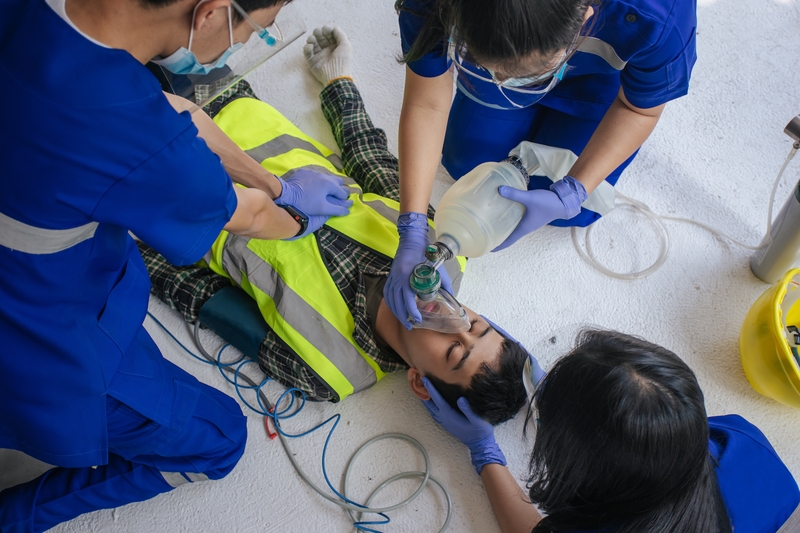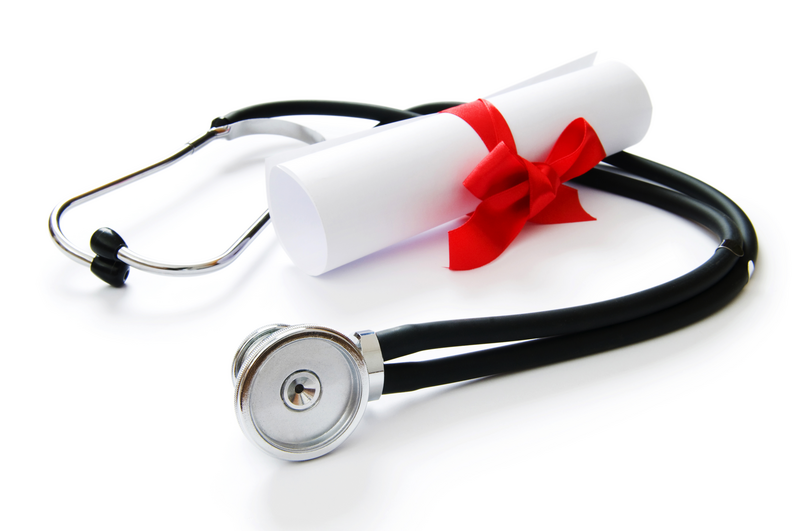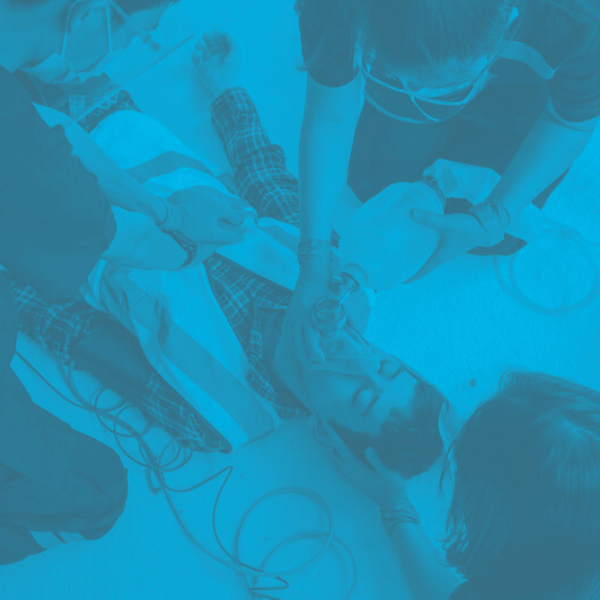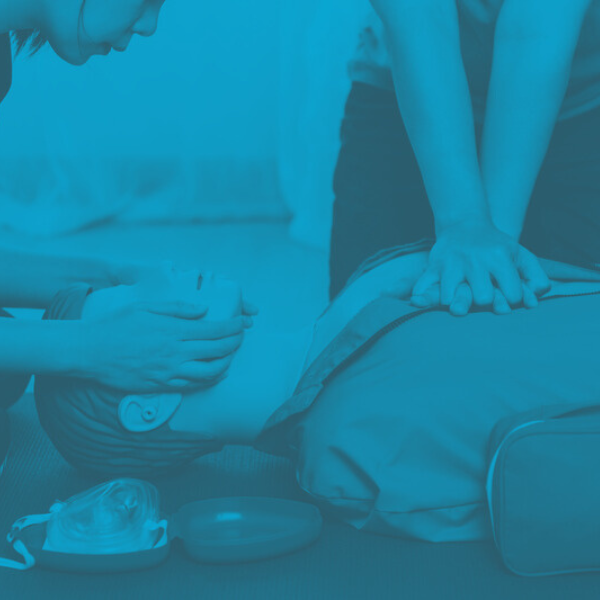What is advanced cardiac life support (ACLS) certification
What is Advanced Cardiac Life Support (ACLS) Certification

by Greta Kviklyte
Life Saver, AMC
Co-authored by Kim Murray, RN, M.S.
posted on Oct 13, 2025, at 2:13 pm
ACLS is a structured system of evidence-based interventions designed to treat the most serious cardiac emergencies. Nurses in intensive care units, physicians in emergency departments, and paramedics in the field rely on ACLS protocols to recognize emergencies quickly and successfully lead resuscitation teams through them.
Why does it matter? ACLS training equips you not only with technical skills as well as the ability to coordinate as part of a high-functioning emergency response team under pressure. In emergency medicine, these are essential skills to know.
At AMC, we honor that commitment by making ACLS certification accessible and aligned with the latest ILCOR guidelines, so you are sure to meet professional licensing requirements for emergency medical care.
We offer Online CPR and BLS Certification
What Does ACLS Stand For
 ACLS stands for Advanced Cardiovascular Life Support, a specialized training program for healthcare professionals who manage patients during the most critical medical emergencies. While Basic Life Support (BLS) teaches the foundations of high-quality CPR, AED use, and basic airway support, ACLS builds on these skills with advanced interventions designed to improve survival in life-threatening cardiac events.
ACLS stands for Advanced Cardiovascular Life Support, a specialized training program for healthcare professionals who manage patients during the most critical medical emergencies. While Basic Life Support (BLS) teaches the foundations of high-quality CPR, AED use, and basic airway support, ACLS builds on these skills with advanced interventions designed to improve survival in life-threatening cardiac events.
Our ACLS certification course is structured around internationally recognized guidelines published by the International Liaison Committee on Resuscitation (ILCOR), so every provider who works with us is aligned with the latest medical science and global best practices.
The curriculum prepares providers to:
- Analyze cardiac rhythms using ECG interpretation to recognize arrhythmias like ventricular fibrillation or tachycardia.Secure the airway through advanced techniques such as intubation o
- r supraglottic devices.
- Establish IV/IO access and administer life-saving medications to stabilize circulation.
- Lead and coordinate team-based emergency care, such as chest compressions and defibrillation.
What Does the ACLS Do?
The primary purpose of Advanced Cardiovascular Life Support is to train healthcare providers to stabilize patients in cardiopulmonary arrest or other life-threatening cardiovascular emergencies. Its ultimate goals are to restore circulation, protect the brain, and improve survival rates.
In practice, ACLS trains providers to:
- Stabilize patients through immediate interventions like defibrillation, advanced airway management, and IV/IO medication delivery.
- Improve survival outcomes by recognizing reversible causes of cardiac arrest and applying the correct treatment pathway quickly.
- Prevent brain damage by ensuring high-quality chest compressions, restoring oxygen delivery, and initiating post-resuscitation care.
- Function as a coordinated team, with clear roles and leadership during code situations.
In short, ACLS is designed to teach providers a combination of technical mastery and structured teamwork.
What Is Covered in ACLS Certification Training?
ACLS training is built to be clear under pressure and aligned with the latest science from ILCOR. You’ll strengthen both your clinical judgment and your hands-on skills across these core areas:
Cardiac Arrest Algorithms
These evidence-based pathways show exactly how to respond to both shockable rhythms, such as ventricular fibrillation and pulseless ventricular tachycardia, and non-shockable rhythms like pulseless electrical activity and asystole. The training also addresses peri-arrest management for bradycardia and tachycardia, as well as post-resuscitation care.
Airway Management
Training begins with the basics of bag-mask ventilation and advances to techniques such as the use of supraglottic airway devices and endotracheal intubation. Learners are also taught how to titrate oxygen delivery and use waveform capnography to confirm tube placement and assess the quality of chest compressions.
Rhythm Interpretation
Clinicians learn to interpret electrocardiograms (ECGs) to identify ventricular fibrillation, pulseless electrical activity, asystole, and other dangerous rhythms. The course also covers tachyarrhythmias, atrioventricular blocks, and ischemic changes that may signal acute coronary syndromes or stroke.
Medication Administration
Providers study the correct use of medications such as epinephrine, amiodarone, adenosine, atropine, and vasopressors. Training includes learning proper dosing, routes of administration (IV/IO), and the timing of each drug within the context of the algorithms, along with safety considerations and contraindications.
Simulation and Clinical Scenarios
Finally, ACLS certification relies on simulated code situations to bring all the skills together. These “megacode” scenarios replicate real emergencies such as cardiac arrest, acute coronary syndromes, stroke, and peri-arrest arrhythmias. Learners practice not only the technical interventions but also teamwork, closed-loop communication, and debriefing.
Who Needs ACLS Certification?
Employers, licensing boards, and hospitals require their providers to earn an ALCS certificate to ensure providers are prepared to manage life-threatening cardiovascular emergencies and work as part of a coordinated resuscitation team.
Nurses – Especially those working in emergency departments, intensive care units, telemetry, and cardiac care. ACLS is often a condition of employment because these nurses are often the ones who have to recognize cardiac emergencies.
Paramedics – In the prehospital setting, paramedics are frequently the first to encounter cardiac arrest, arrhythmias, or stroke. ACLS equips them with the skills to stabilize patients in the field before transferring them to a hospital.
ER Technicians and ICU Personnel – Emergency room techs and ICU staff are part of the code team that responds when a patient arrests in the hospital. ACLS training ensures they can contribute effectively, whether assisting with defibrillation, medication delivery, or airway support.
ACLS vs BLS: What’s the Difference?
BLS provides the foundational, essential skills every responder needs to recognize a cardiac arrest, start CPR, use an AED, and maintain an open airway until help arrives. It’s designed for a wide audience, from first responders to hospital staff, so that anyone can step in and provide immediate life-saving support during an emergency. Where BLS stops, ACLS begins and expands into more advanced techniques.
BLS is the minimum requirement for almost every healthcare role, while ACLS equips providers with the knowledge and skills to manage the full course of a cardiac crisis.
 How to Get ACLS Certified
How to Get ACLS Certified
1) Register for an ACLS course
Choose an ILCOR-aligned, accredited program that your employer and state board accept. Pick the format that fits your schedule and note any course deadlines, ID requirements, and how CE/CME credit is issued. Complete enrollment and review any pre-course materials assigned by your provider.
2) Check required prerequisites
Most ACLS programs require a valid BLS certification (or documented CPR proficiency). Confirm your BLS status and make sure it will remain active through your ACLS course date. If your role requires additional prep (e.g., basic ECG and emergency pharmacology familiarity), plan time for a quick refresher.
3) Renew BLS if needed
If your BLS is expired or will expire before you finish ACLS, renew that one first. Save your BLS completion card/certificate because you’ll need it for ACLS admission and HR verification.
4) Prepare for the course
Study the core course materials you’ll be tested on: adult arrest algorithms (VF/pVT, PEA/asystole), brady/tachy management, post-ROSC care, airway support, rhythm interpretation, IV/IO access, and medication timing/dosing. Most providers include a written exam and a team-based “megacode” or skills test to assess performance under pressure.
When you’ve passed, you’ll receive your ACLS provider card that is typically valid for two years, along with CE/CME documentation. File both of these with your employer and licensing board so they have proof your certification is up to date.
Certification Renewal: Things to Consider
The renewal process is simpler and shorter than the initial certification, but it still tests your ability to apply the fundamentals of ACLS. Most providers require proof of a current or recently expired ACLS card before you are allowed to enroll. Once you do, you’ll complete an updated course, pass a knowledge exam, and demonstrate skills through scenario-based testing (hands-on or online, depending on format).
Certificate renewals are important because ILCOR updates its evidence-based guidelines every two years to reflect the latest scientific advancements in resuscitation and emergency care. Renewal ensures you’re practicing the most effective, up-to-date techniques for stabilizing patients.
When it comes to renewing ACLS, you can choose from a traditional classroom refresher, a blended option, or a fully online renewal, such as AMC’s accredited program. Online renewal is especially popular among busy healthcare professionals since it allows you to study at your own pace, take the exam when you’re ready, and receive instant proof of certification.
Take the Next Step With AMC
At AMC, we make it simple to stay certified. Our 100% online ACLS courses are fully accredited, self-paced, and designed to fit your schedule without sacrificing quality. In less than an hour, you can earn up to 8 AMA Category 1 Credits™, refresh your lifesaving skills, and receive instant proof of certification accepted nationwide.
Register today for AMC’s ACLS certification and continue your journey to deliver world-class patient care.



